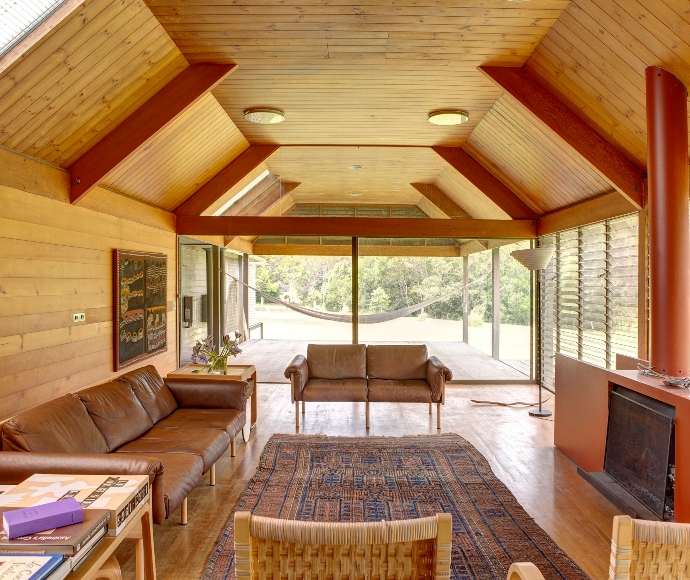Glenn Murcutt's ground-breaking Marie Short Farmhouse listed on State Heritage Register
The NSW Government has recognised Marie Short Farmhouse in Kempsey for its heritage significance as an early example of an environmentally responsive building.
Executive Director Heritage NSW Sam Kidman said the ground-breaking late 20th century modernist building was designed by renowned architect Glenn Murcutt, the only Australian to win the coveted international Pritzker Prize.
“Built in 1975, Marie Short Farmhouse’s dynamic architectural elements include a curved roof, glazing and louvre system, allowing inhabitants to adjust interior air movement and light as seasons and weather demand,” Mr Kidman said.
“Today, more than ever, we need this type of architecture that can adapt and respond to changes in climate.
“Congratulations to Mr Murcutt, it’s an honour to have his ground-breaking building in Kempsey, to help educate and lead the way in designing or remodelling future homes to better harness in-built methods for heating and cooling.”
Glenn Murcutt was widely acclaimed for his ecologically responsive and socially responsible modernist buildings, to which he applied the ethos of 'touching the earth lightly', ensuring minimal disturbance to the environment.
Mr Murcutt was delighted to hear that Marie Short Farmhouse is now listed on the State Heritage Register.
“At a public level its registration and protection is a pleasing and important recognition of this building now and for the future,” Mr Murcutt said.
“The heritage listing speaks of the importance of architecture being of its place, its culture and its time and its time ahead. The listing acknowledges that it is still relevant 50 years later!
“On a personal level, it is a great privilege to have this important acknowledgement of my work made within my lifetime.”
Marie Short Farmhouse is built from locally reclaimed timber and centres around 2 modular pavilions, with key design elements responding to local climatic conditions such as wind, rainfall and orientation.
More information can be found on the Heritage NSW website.
